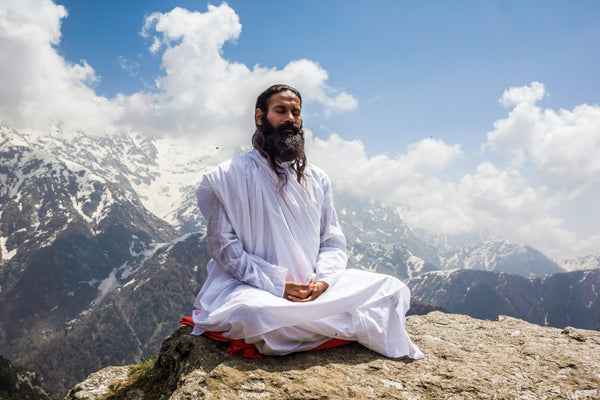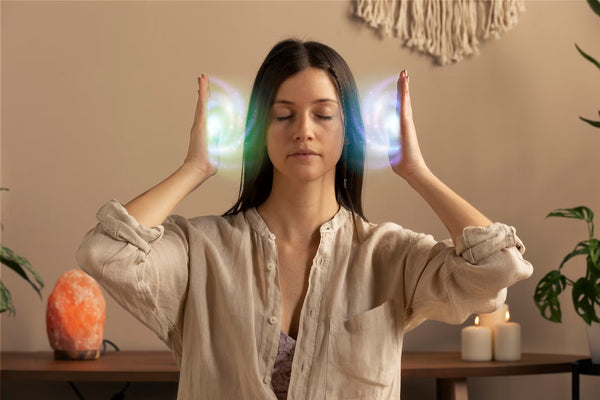What is Transcendental Meditation?

Transcendental Meditation (TM) is a specific form of meditation that was developed by Maharishi Mahesh Yogi in the 1950s and gained popularity in the 1960s. It is a technique that aims to promote deep relaxation, reduce stress, and cultivate a state of restful alertness.
In Transcendental Meditation, practitioners sit comfortably with their eyes closed and silently repeat a mantra—a specific sound or word—mentally. The mantra is individually assigned by a trained TM teacher based on a specific process and is not shared publicly. The repetition of the mantra is done effortlessly and acts as a vehicle for transcending ordinary thinking and experiencing a state of transcendence or pure consciousness.
The practice is typically done for 20 minutes twice a day—once in the morning and once in the evening. During the meditation, the mind settles down and becomes more quiet, while the body experiences a state of deep rest. This state is said to be characterized by a sense of inner calm, mental clarity, and revitalization.
Can you do Transcendental Meditation on my own?

Transcendental Meditation (TM) is typically taught by certified TM teachers through a structured course. However, once you have received proper instruction and guidance from a trained teacher, it is possible to practice TM on your own at home.
After learning TM, you can establish a regular meditation routine by allocating specific times each day for your practice. The recommended practice is usually 20 minutes twice a day, once in the morning and once in the evening. Find a quiet and comfortable space where you won’t be disturbed and sit in a relaxed position with your eyes closed.
During TM, you would silently repeat the mantra assigned to you by your TM teacher. Remember that the specific mantra is individual and not shared publicly. The mantra serves as a vehicle for transcending ordinary thinking and experiencing a state of deep restful alertness.
The key is to allow the mantra to be effortlessly and gently repeated in your mind, without actively trying to control or manipulate your thoughts. If thoughts or distractions arise, you simply gently and non-judgmentally return to repeating the mantra. Allow yourself to relax and settle into a state of inner calm and stillness.
While practising TM on your own, it’s important to maintain the fundamental principles and techniques that you learned during your training. These principles include allowing the mantra to be effortless, avoiding active concentration or manipulation of thoughts, and practising regularly.
It’s worth noting that practising TM independently is most effective after receiving proper instruction and personal guidance from a certified TM teacher. They can provide valuable insights, answer questions, and address any challenges that may arise during your practice. If you have learned TM but encounter difficulties or have questions, it’s recommended to reach out to your TM teacher for support and guidance.
How to do Transcendental Meditation step by step?

Transcendental Meditation (TM) is typically taught through a structured course by certified TM teachers. While it is not possible for me to provide the exact technique and personalized guidance that a TM teacher would offer, I can provide a general outline of the steps involved in TM practice.
Keep in mind that it’s important to receive proper instruction from a trained TM teacher to practice TM correctly and effectively. Here is a general step-by-step guide:
- Find a Quiet and Comfortable Space: Choose a quiet and peaceful environment where you can meditate without distractions. Sit in a comfortable position, either on a chair or on the floor with support if needed.
- Close Your Eyes and Relax: Close your eyes gently and allow your body to relax. Release any tension or physical discomfort you may be experiencing.
- Repeat the Mantra: Mentally repeat the mantra assigned to you by your TM teacher. The mantra is a specific sound or word chosen for you individually and is not shared publicly. Repeat it silently in your mind, allowing it to be effortless and natural. Remember not to try to control or manipulate your thoughts actively.
-
Let Thoughts Come and Go: During TM, thoughts and distractions may arise. When this happens, simply observe them without judgment and gently return your attention to repeating the mantra. Don’t try to suppress or forcefully push away thoughts—allow them to come and go naturally.
- Maintain Effortlessness: It’s essential to maintain an effortless and non-concentrative approach during TM. Avoid actively concentrating or analyzing the mantra or trying to achieve a particular state of mind. Simply allow the mantra to be gently repeated, effortlessly.
- Practice for the Recommended Duration: Practice TM for about 20 minutes twice a day, ideally in the morning and evening. Set a timer or use a gentle alarm to indicate the end of your meditation session.
- Gradually Transition: After your meditation session, take a few moments to transition back to your regular activities. Open your eyes slowly, stretch your body, and bring your awareness back to the present moment.
Remember, the above steps provide a general outline of the TM practice, but to learn TM correctly and effectively, it is highly recommended to receive proper instruction and guidance from a certified TM teacher. They will provide you with personalized instructions, assign a mantra specifically for you, and address any questions or challenges you may encounter during your practice.
How much does the Transcendental Meditation program cost?

The cost of the Transcendental Meditation (TM) program can vary depending on several factors, including the location, the organization offering the program, and any additional services or materials provided which cost $380-$960. It’s best to contact a local TM centre or certified TM teacher for the most accurate and up-to-date information on program fees.
In some countries, the TM program operates on a sliding fee scale based on an individual’s income or financial situation, making it more accessible to a wider range of people. Scholarships or reduced fees may also be available in certain cases.
It’s worth noting that the fees for the TM program typically cover the initial instruction, a series of personalized sessions with a certified TM teacher, ongoing support, and access to group meditations and knowledge sessions. Additionally, the cost may include instructional materials such as books or audio recordings.
If you are interested in learning TM and have concerns about the program’s cost, it’s recommended to reach out to a local TM centre or certified TM teacher. They can provide you with detailed information about the program fees and any potential options or accommodations available to make it more affordable for you.

